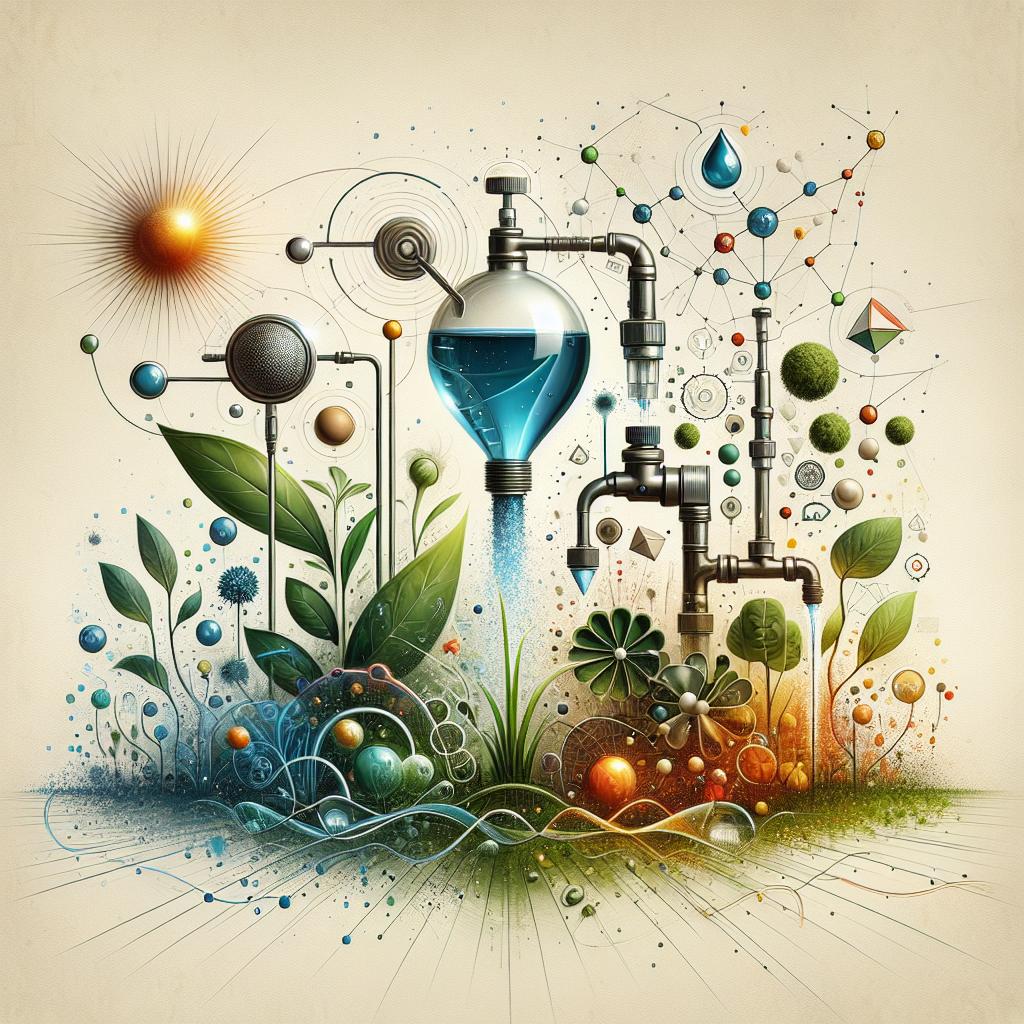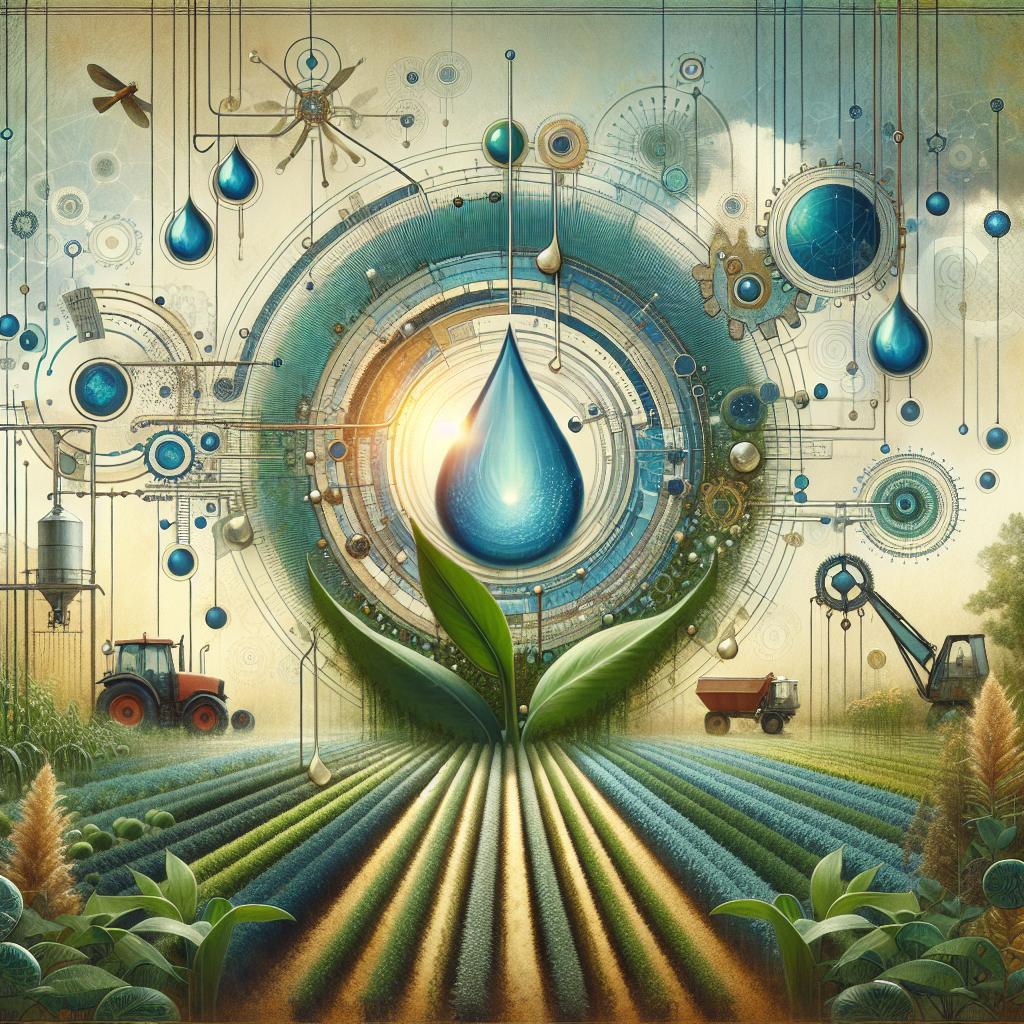This post may contain affiliate links which means I may receive a commission for purchases made through links. Learn more on my Private Policy page.
Transform Your Farming Game: A Friendly Guide to Installing Drip Irrigation Systems
Welcome to the world of drip irrigation, where water meets wisdom and plants flourish with delight! If you’ve ever dreamed of giving your crops the precise hydration they crave, you’ve arrived at the perfect spot.Think of drip irrigation as a gentle rain, nurturing your harvest while conserving precious water resources. It’s efficient, effective, and oh-so-rewarding for both the farmer and the surroundings. In this friendly guide, we’ll walk you through the steps of installing a drip irrigation system on your farm. Whether you’re a seasoned pro looking to switch things up or a budding enthusiast eager to dive into efficient farming practices, we promise to make this journey enjoyable and straightforward.Let’s dive right in and turn that patch of soil into a thriving oasis, one drop at a time!
Selecting the Right Components for your Drip Irrigation Setup
Choosing the right components for your drip irrigation system is crucial to ensure efficiency and effectiveness. Start with drippers, which are essential for delivering water directly to the root zone of your plants. Look for options that offer adjustable flow rates, allowing you to cater to the specific needs of different plants. Next, consider tubing; you’ll want durable, UV-resistant materials that can withstand the elements while being flexible enough to navigate around your garden layout. Don’t forget to add filters to your system to eliminate debris that can clog the drippers, ensuring smooth water flow and protecting your investment.
Another important element to think about is pressure regulators, which help maintain constant water pressure throughout your irrigation system, preventing overwatering and plant stress. You might also want to incorporate fittings and emitters that are compatible with your tubing for easy assembly and adjustments. Lastly, installation accessories like stake supports can enhance your setup by stabilizing the tubing and drippers. By carefully selecting these components, you can build a robust drip irrigation system that maximizes water efficiency while promoting healthy plant growth.

Preparing Your Farm: Key Steps Before Installation
Before diving into the installation of your drip irrigation system, taking a moment to prepare your farm can make all the difference in ensuring an efficient setup. Begin by evaluating your land layout. Consider the size of your fields, the crop types, and their water requirements. Mapping out your farm helps you determine where to place main lines, drip tubes, and emitters for optimal coverage. It’s worth assessing the soil quality as well, as this will influence both water distribution and the specific needs of your crops.
Next, don’t overlook the importance of an efficient water source. Verify the availability and reliability of the water supply, whether it’s a well, pond, or municipal source. Conduct a flow rate test to measure how much water can be drawn at a time; this ensures that your system is sized correctly to manage the irrigation.Additionally, familiarize yourself with any local regulations regarding water usage and irrigation, as compliance will save you from potential headaches later on. Assemble the necessary tools and materials, which may include:
- Drip tubes
- Emitters
- Filtration systems
- Connectors and fittings

Mastering the installation Process: tips for a Flawless Setup
Successfully installing a drip irrigation system hinges on meticulous planning and planning. Begin by assessing your farm’s layout and determining the areas that require irrigation. Take precise measurements to calculate the necessary length of tubing and the number of emitters you’ll need. It’s advisable to create a diagram of your farm, marking out the rows and sections where the irrigation will be installed. This visual aid will not only help in organizing your installation but also in ensuring coverage is uniform, reducing the risk of overwatering or dry patches.
Once you have your materials ready, the actual installation must follow a systematic approach. Start by laying out the mainline and sub-lines before securing them into place. Consider the following tips for a smooth setup:
- Check for leaks after connecting all components.
- use filters to minimize clogging from debris and sediment.
- Regularly monitor the system for optimal performance.
Additionally, it’s beneficial to establish a schedule for maintenance checks, ensuring that your system operates efficiently throughout the season.
Maintaining Your Drip System: Best Practices for Longevity and Efficiency
To ensure that your drip irrigation system operates smoothly for years to come, regular maintenance is key.Start by checking the filter system frequently. Clogs in the filters can lead to uneven watering, which can stress your plants. It’s advisable to:
- Clean filters every few months.
- Inspect emitters for blockages or damage.
- Flush the system at least twice a year to remove sediment and debris.
Keep an eye on the tubing and joints as well. Over time, materials can degrade due to UV exposure or temperature fluctuations. regularly check for signs of wear or leaks, and replace any damaged sections promptly. implementing a seasonal check can be beneficial, where you:
- Review your system’s layout and adjust for plant growth.
- Test water pressure to ensure delivery is consistent.
- Document any repairs for future reference.
Managing your drip system not only prolongs its life but also enhances the efficiency of water use on your farm, ensuring every drop counts towards nurturing your crops.
insights and Conclusions
As we wrap up our journey into the world of drip irrigation, we hope you’re feeling inspired and equipped to transform your farm into a thriving oasis of productivity. Just like the roots of your plants reaching for nutrients in the soil, may your newfound knowledge help you dig deeper into the art of efficient watering.Remember,every field,every crop,and every farm is unique,so don’t hesitate to tweak and adapt the steps we’ve shared to suit your specific needs. Whether you’re a seasoned gardener or a budding agriculturist,implementing a drip irrigation system can be a game-changer for your yield,water conservation,and overall peace of mind.
So grab your tools, roll up your sleeves, and embark on this rewarding adventure. With a little effort and ingenuity, you’ll not only nourish your plants but also cultivate a sustainable future for your farm.Happy watering, and may your harvests be bountiful! 🌱💧
This post may contain affiliate links which means I may receive a commission for purchases made through links. Learn more on my Private Policy page.

